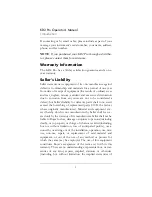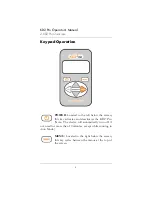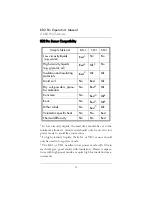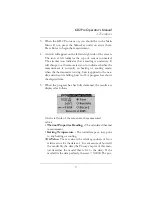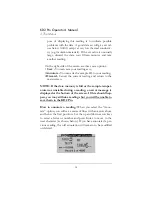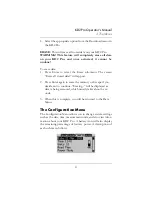
8
KD2 Pro Operator’s Manual
2. KD2 Pro Overview
errors from contact resistance become negligible making the KS-
1 sensor a good choice.
TR-1
The large (100 mm long, 2.4 mm diameter) single needle TR-1
sensor measures thermal conductivity and thermal resistivity.
It is designed primarily for soil, concrete, rock, and other gran-
ular or solid materials. The relatively large diameter and typi-
cally longer heating time of the TR-1 sensor minimize errors
from contact resistance in granular samples or solid samples
with pilot holes. The TR-1 needle heats the sample signifi-
cantly more than the KS-1 sensor, which allows it to measure
higher thermal conductivity samples (see specifications), but
means that you
should not measure liquid samples with the
TR-1 sensor
. The large diameter of the TR-1 is more robust
than the KS-1, meaning that it is less likely to be damaged by
normal usage conditions in soil or other solid materials. Addi-
tionally, the dimensions of the TR-1 sensor conform to the
specifications for the Lab Probe called out by the IEEE 442-03
Guide for Soil Thermal Resistivity Measurements.
SH-1
The dual needle SH-1 sensor measures volumetric heat capac-
ity, thermal diffusivity, thermal conductivity, and thermal resis-
tivity. The SH-1 is compatible with most solid and granular
materials, but
should not be used in liquids due to the
large heat pulse
and possible resulting free convection in liq-
uid samples.
Read Time
The read time is the time, in minutes, during which data are
taken to compute thermal properties. Heat is applied for half
of the time, and measurements are taken over the full time.






